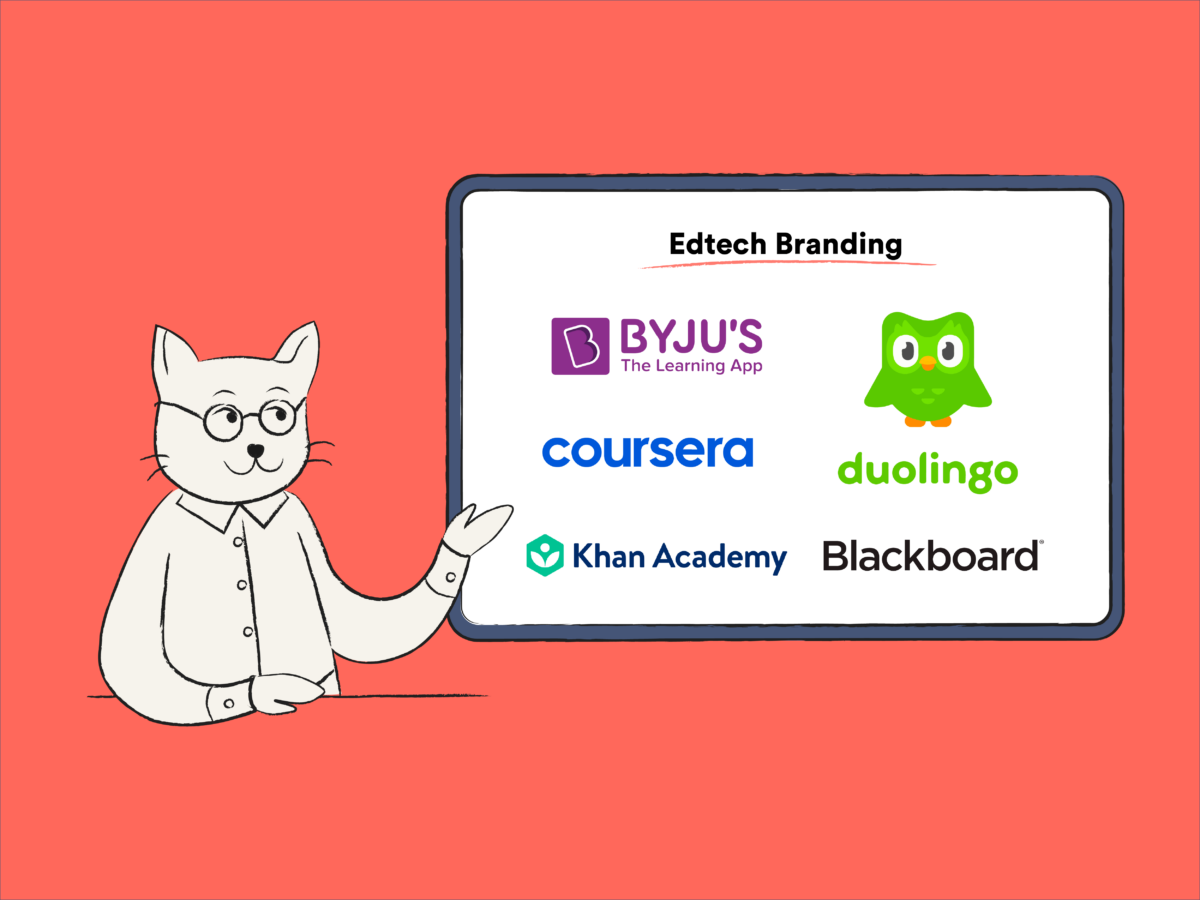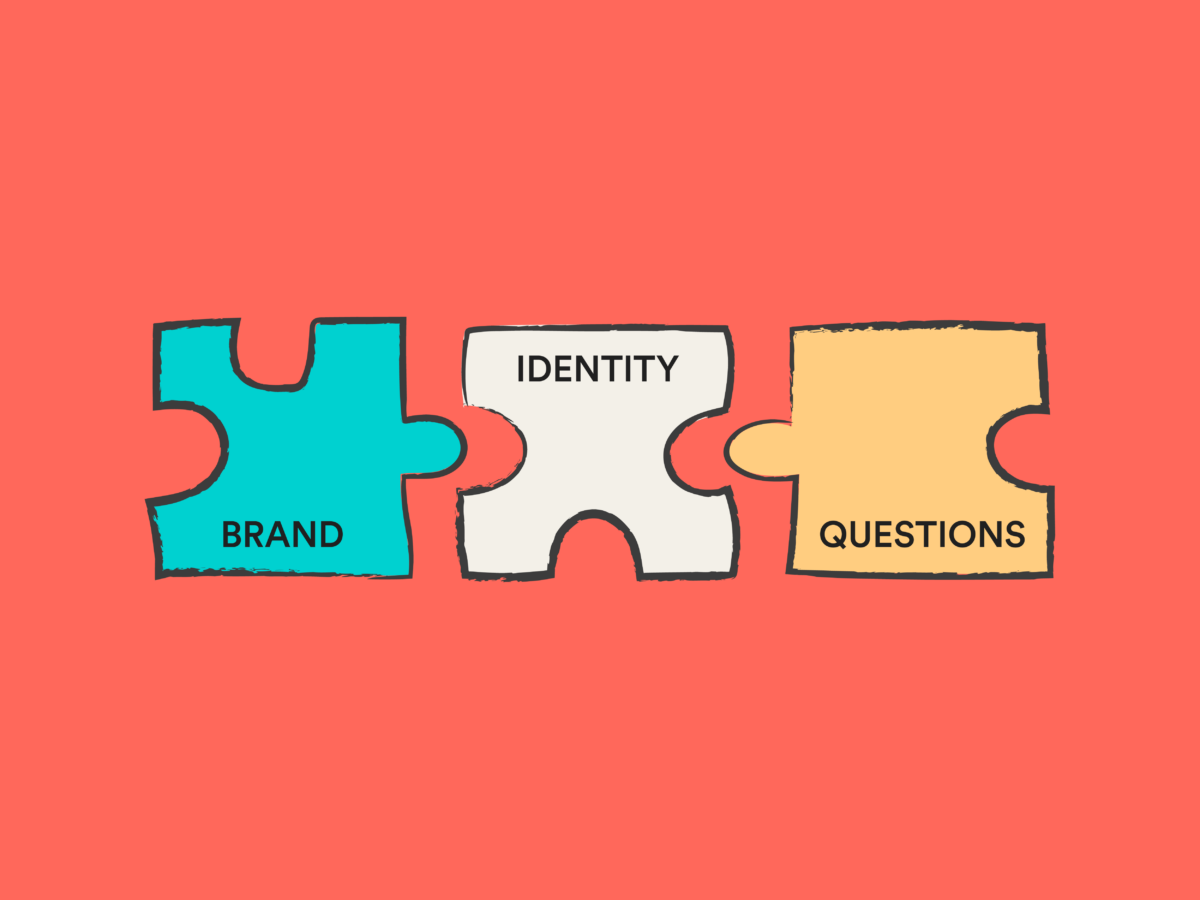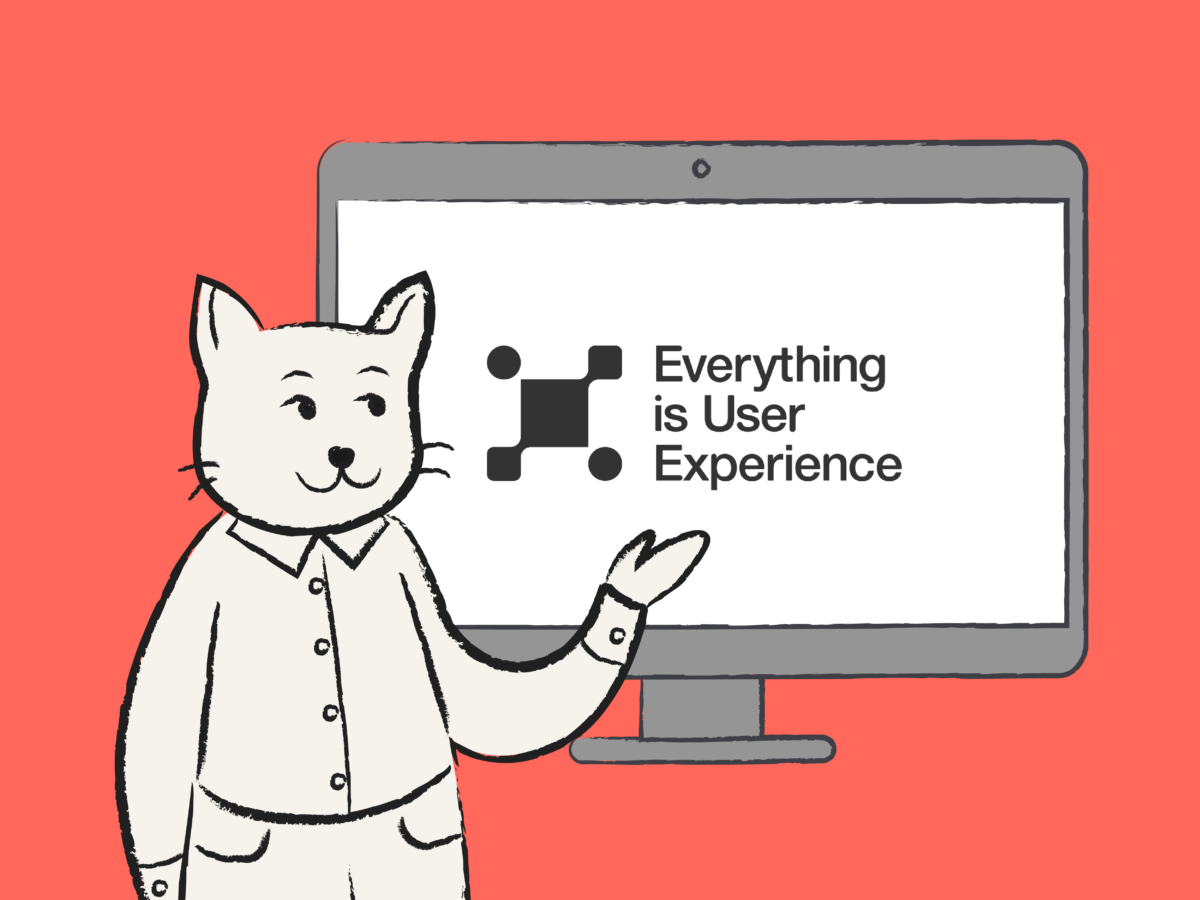The education system is changing for good. Learning processes are moving online, whether in formal settings like higher education institutions or independent learners. It’s making education more accessible to people all around the world and easier to fit around already busy schedules.
For this reason, the Edtech industry is booming, worth over $340 billion. In fact, Edtech usage in schools has increased by 99% just since 2020. Inevitably, this results in a crowded market. So, how will you make your company stand out?
Good branding is essential if you want to reach your audience. But how do you brand in the education sector? We’re going to take a look at why it’s so important to get it right and review some of the best examples out there before outlining what you need to consider when marketing your business.
What is Edtech?
So, what is Edtech? Well, it stands for Educational Technology, which basically means using technology to enhance teaching and e-learning. This can take many forms, from apps that help learners practice their skills to online courses that make education more accessible.
They are often developed with advanced artificial intelligence technologies like machine learning alongside virtual reality and augmented reality. This gives students a whole new level of engagement and interactivity.
Edtech is used by educational institutions of all kinds, from elementary schools to universities, and it’s rapidly changing the way we think about education. With the help of Edtech, students can take part in adaptive learning, which is more engaging, interactive, and personalized than ever before.
Why is branding important in the Edtech industry?
You may not associate education with branding. However, companies in the Edtech sector rely heavily on marketing to become successful. There are a few reasons for this. Let’s take a look at the top 4:
- Building trust: Online learning is all about building trust with your audience, and a strong brand helps you do that. When people see a well-known brand in the Edtech market, they’re more likely to trust that company with their learning experience. Educational apps and software usually come at a price, and students aren’t known for their wealth. This means in order to invest in particular software, it’s vital that they trust them.
- Being visible in a crowded market: Edtech startups need to differentiate themselves in a crowded market. By creating a unique identity and messaging, startups can stand out from the competition and attract stakeholders like venture capital investors. This is an essential stepping stone to success. What makes your company different? Why should people invest in your service rather than your competitors?
- Connectivity: The number of remote learners is growing every day. For this reason, the Edtech industry relies heavily on connectivity and digital learning, which means that user experience is key. Strong branding throughout the marketing, messaging, and software makes for a cohesive and enjoyable learning experience for students, teachers, and other stakeholders.
- Encouraging digital learners: Branding is important in the Edtech industry because it can have a big impact on the perception of the industry as a whole. Not everyone is lucky enough to have in-person education at their fingertips. By creating a positive and recognizable image, brands can help to elevate the entire industry and encourage more people to engage with digital learning.
As you can see in the graph below, in recent years, the online education industry has grown exponentially. To keep this trend going, Edtech companies need to focus on their branding in order to get their service out there.
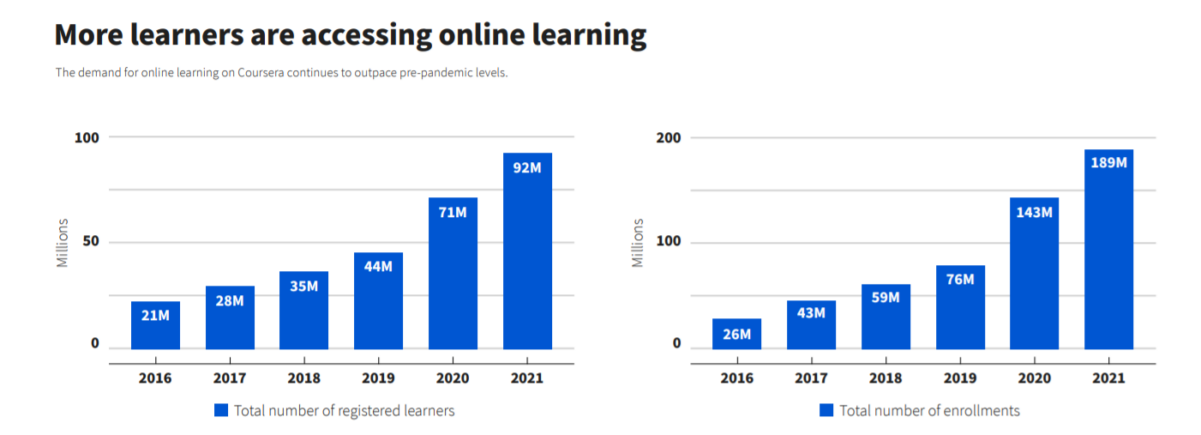
Best examples of branding in the Edtech industry
So, we know the importance of branding in the Edtech industry, but let’s look at some examples for inspiration. There are some incredibly successful companies out there that have nailed their marketing strategy. We’re going to find out why they’re so memorable and what makes them so successful.
Byju’s
Byju’s is a leading Edtech company in India, with a focus on K-12 education. Byju’s uses branding to showcase their commitment to personalized learning, with a bright and friendly aesthetic that appeals to children and parents alike.
They have established themselves as a trusted brand in the Indian Edtech market, with a recognizable logo and messaging that emphasizes the power of technology to transform education.
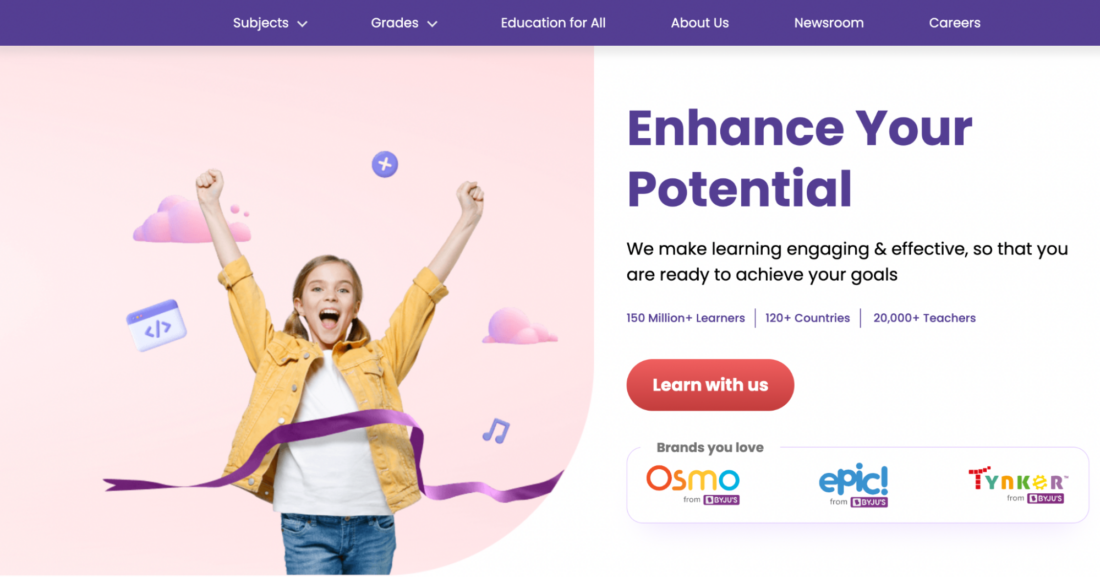
What’s working?
- Colors: The psychology behind colors in marketing is fascinating. Here, we can see the bright purple that stands out on Byju’s website. In branding, this is associated with creativity and wisdom. Immediately, the audience will assume this company focuses on fun and creative ways to learn.
- Images: An image of a happy child celebrating tells the audience that this isn’t a traditional and formal learning platform. Instead, it prioritizes engagement.
Coursera
Coursera is a MOOC (Massive Open Online Courses) platform that offers courses from some of the world’s top universities. It uses branding to showcase its academic credentials and expertise, with a clean and professional aesthetic that conveys a sense of trust and authority. It’s a completely different approach to Byju’s, and this is because they have a different target audience..
They have established themselves as a leader in the MOOC space, with a recognizable brand and messaging that emphasizes the power of online learning for new skills to transform lives and communities.
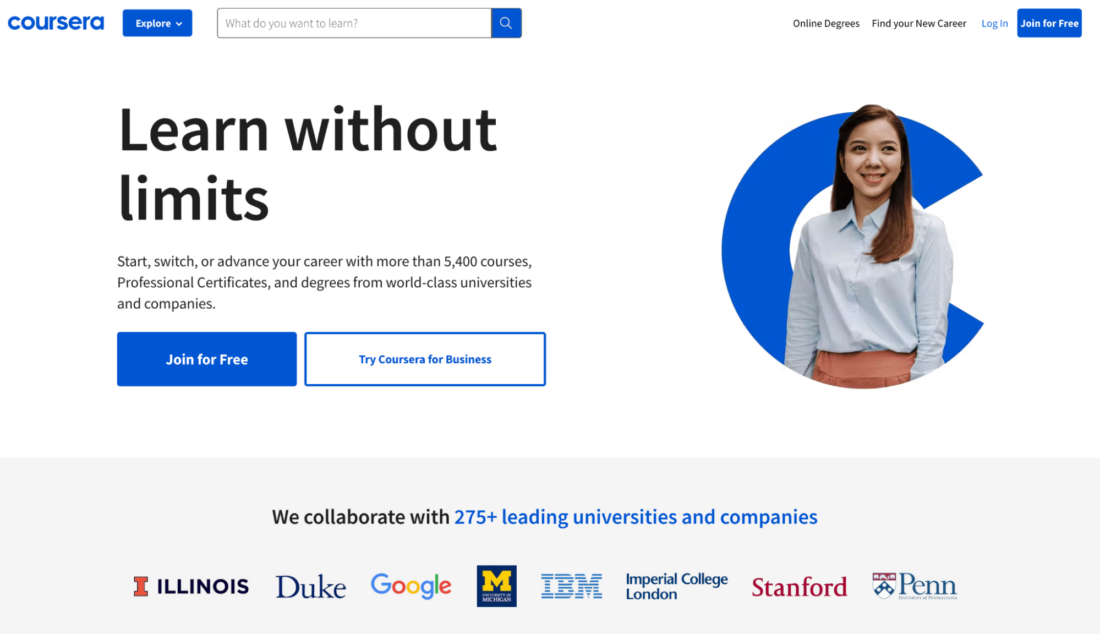
What’s working?
- Colors: This shade of blue is associated with dependability and trust. The minimal look creates a sense of professionalism and makes it clear to the audience that this is a platform for older learners to further their education rather than school children.
- Showcasing collaboration: A clear list of well-established companies and institutions furthers the sense of dependability and helps convince more partners to trust them.
- Image: The image shows a young woman who is smartly dressed. This depicts their target audience well, so those visiting the website will feel affiliated with the company straight away.
Blackboard
Blackboard has established itself as a trusted brand in the Edtech industry, with a focus on providing learning management systems for universities and other institutions. They use a minimal aesthetic that conveys a sense of professionalism.
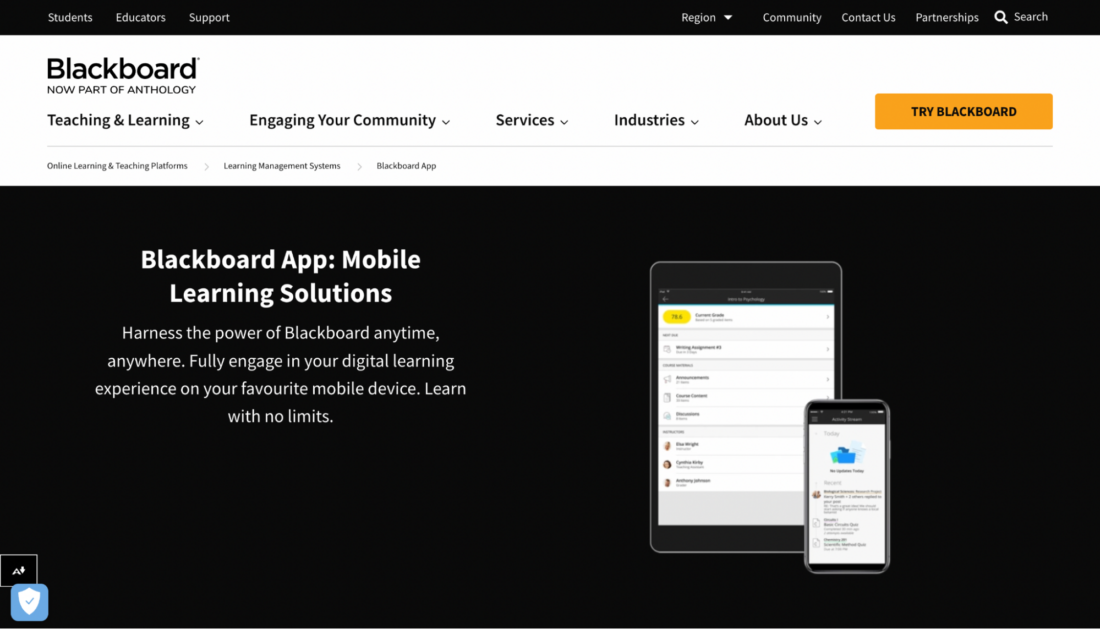
What’s working?
- Colors: Black and white are often associated with calmness, which is an interesting choice in this industry. It’s possible it works by cutting through the noise of the competition with a very professional and sleek design that catches your eye.
- Showcasing mobile devices: Straight away, on-brand with the colors, are images of mobile devices. This insinuates connectivity, ease, and portability, which are all attractive to busy learners.
Duolingo
Now, let’s take a look at an opposite example and one we most likely all know. Duolingo has been an incredibly successful learning management system (LMS) in the Edtech industry. Their branding is instantly recognizable, and the gamified approach to language learning makes it accessible and engaging for all ages.
Duolingo’s branding is successful because it aligns perfectly with its target audience: language learners who want to be educated in a fun and interactive way.

What’s working?
- The mascot: The Duolingo owl is playful and memorable. It pops up everywhere, from in the app to email communications, creating a cohesive brand identity.
- Colors: Bright green and blue is a colorful mixture of growth and trust. It can appeal to younger and older learners alike and tells the audience that it prioritized fun learning over more professional courses.
Khan Academy
Khan Academy‘s branding is simple and approachable, with a focus on accessibility and inclusivity. The company’s messaging emphasizes its mission to provide free, world-class education to anyone, anywhere.

What’s working?
- Colors: By Jumping on the green and blue bandwagon, Khan Academy can associate itself with the best of the Edtech industry.
- Images: By using an image of a child, we know instantly who their target audience is. The doodles surrounding the image reiterate this.
How to market your Edtech company
We know branding is a crucial aspect of any Edtech company’s success. It’s what sets you apart from the competition and establishes you as a trusted authority in the industry. But how can you compete with the likes of Duolingo and Khan Academy? Here are some top tips:
Understand your audience
The first step in branding your Edtech company is to understand your audience. You’ll need to whittle down who you want to appeal to. Ask yourself the following questions:
Who are your learners?
What are their goals and pain points?
What do they value in an Edtech platform?
Once you have a clear understanding of your target audience, you can tailor your branding and messaging to speak directly to their needs and interests. This will underpin your whole marketing strategy.
From the examples above, take a quick look at their home pages, you can gauge who they are trying to target. This is what you want to aim for.
Leverage social media
Social media is a great way to build brand awareness and connect with your audience. Consider using platforms like Twitter, Instagram, and LinkedIn to share your brand messaging, engage with your followers, and showcase your initiatives and achievements.
Ensure that your posts are consistently on brand by creating a style guide. The majority of businesses will have a document that can be shared with all employees and tells them exactly what colors, fonts, and logos to use. This creates a cohesive and recognizable brand across all platforms.
Check out TikTok’s style guide below for some inspiration:
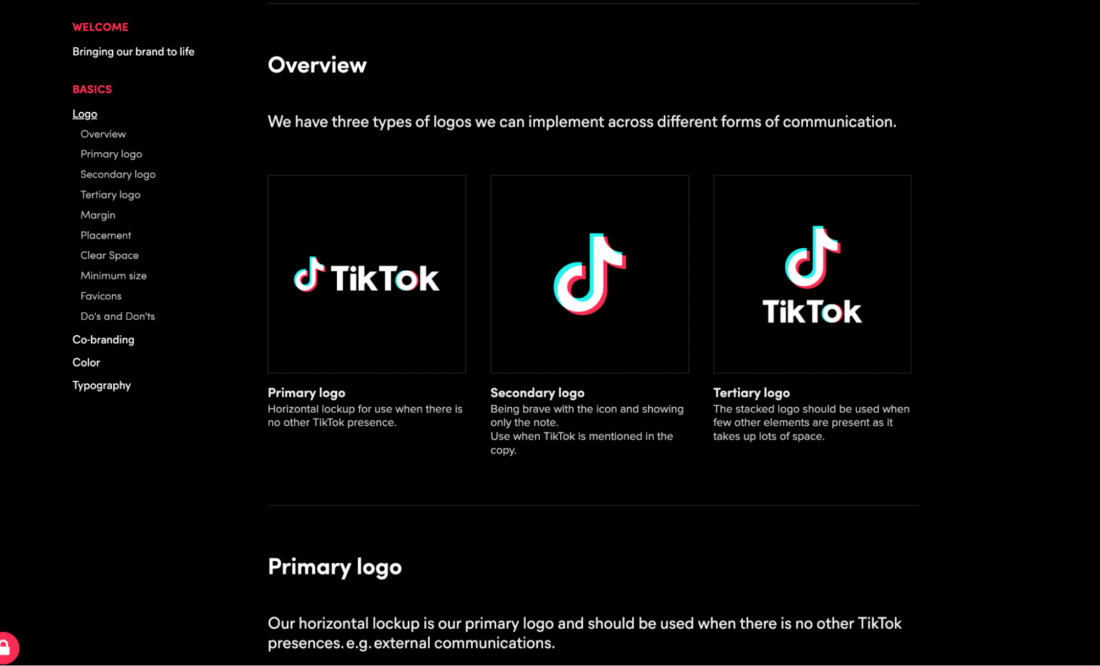
Use gamification
Gamification is a powerful tool for engaging learners and making the educational experience more fun and interactive. For all audiences, this kind of learning has proven to be incredibly effective. In fact, challenge-based gamification in education has been shown to lead to an increase of 34.75% in student performance.
Consider incorporating this into your branding and marketing. This can be in the form of:
- Badges
- Points
- Leaderboards
- Mascots
- Scorecards
The more fun the branding is, the more likely you’ll pique the interest of your target audience.

Emphasize remote learning
With the rise of remote learning (thanks to the pandemic), it’s more important than ever to emphasize the benefits of online education. Use your branding and messaging to showcase the flexibility and accessibility of your learning platform and highlight the ways in which technology can enhance the learning experience.
As seen in the examples, you can do this by:
- Using image and video content of mobile devices being used
- Include portability in all messaging
- Focus social media content on the ability to learn remotely
Ensure that your branding and messaging are consistent across all devices and that your platform is designed to function seamlessly on smartphones and tablets.
Conclusion
Global Edtech is saturated with startups. Don’t let yours fail by not prioritizing branding. The most important consideration is knowing your audience. If you do this right, your marketing strategy should come naturally.
It’s easy to become outdated in this fast-paced environment. Stay ahead of the trends and technological advancements by following leading Edtech solutions on social media and news outlets. It’ll help inform your branding and keep your software updated.
As we move towards a more digital world, the education industry has the potential to revolutionize the way we learn and work. Therefore, it is crucial to invest in branding and marketing to make sure the benefits of digital learning are accessible to everyone. Technology in education is a rewarding sector to be involved in. Make sure you make your mark.

